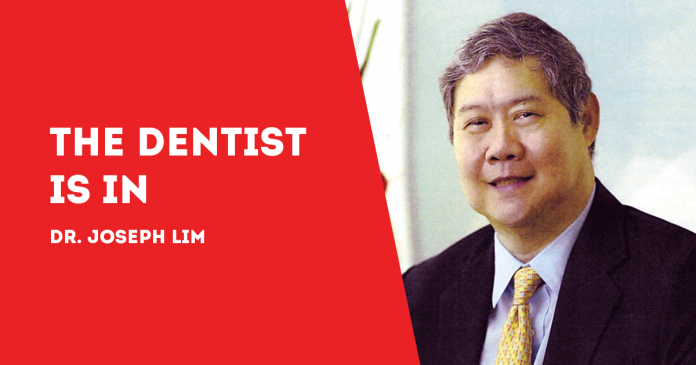
THE NEW normal has arrived.
In a newspaper article I came across, it was reported that a dentist and her staff in a clinic in Antipolo City wear three layers of PPE if the patient has not consulted with them before.
Disinfection procedures have become more strict, with some clinics using ultraviolet light to clean the clinic.
The new normal involves prior appointment to enable clinics to screen patients for any signs of COVID-19 infection. This is a major adjustment in the dental practice, says Dr. Stephen Almonte, President of the Philippine Dental Association (PDA).
Patients are required to wear face masks, undergo a temperature check and disinfect their hands and shoes (the latter in a foot bath). Unnecessary companions are discouraged.
In April, the 15,000-member PDA issued safety guidelines for dentists to implement upon reopening their practices. “All patients should be treated as potentially infective COVID-19 carriers. As such, high level of precaution should be exercised. If an individual exhibiting symptoms of possible COVID-19 arrives in your dental practice, patient must be immediately referred to seek medical treatment,” the PDA guidelines stress.
“Dental professionals are at high risk for being infected and transmitting the virus though aerosol-generating procedures such as ultrasonic scaling. These risks are unique to dental interventions, where aerosol generation, handling of sharps and proximity of the provider to the patient is unavoidable,” the guidelines noted.
Today we see a lot of plastic dividers being installed, in between the seats of taxi and tricycle drivers and passengers, between the buyer and the seller/cashier/checkout counter in many stores, and in other places as well – such as in dental clinics.
What we know is that viruses survive for two to three days on plastic that cover many things that we use everyday, such as containers and bottles, furniture seats and even elevator buttons.
I know it’s very difficult to sterilize or sanitize plastic. When it is used as a Personal Protective Equipment, it is usually used only once and discarded.
The virus that causes COVID-19 survives on plastic surfaces, depending on humidity and temperature, for up to three days. This is a long period and if the plastic is not sanitized properly in between patients, then transmission incidences will be very high.
Much of the safety precautions in the wake of the coronavirus pandemic revolve around the persistence of the coronavirus outside of the human body.
It means that transmission is a lot faster and puts more people at risk. That’s because the virus is carried in droplets expelled by infected persons when they cough, sneeze and even do things that were taken for granted before: when they talk, sing, shout and even the way they pronounce words. It is believed, for example, that using “th” words expels more droplets.
In the next column we will explain how the virus survives outside of the human body.
***
Dr. Joseph D. Lim is the former Associate Dean of the UE College of Dentistry, former Dean of the College of Dentistry, National University, past president and honorary fellow of the Asian Oral Implant Academy, and honorary fellow of the Japan College of Oral Implantologists. Honorary Life Member of Thai Association of Dental Implantology. For questions on dental health, e-mail jdlim2008@gmail.com or text 0917-859151./PN

